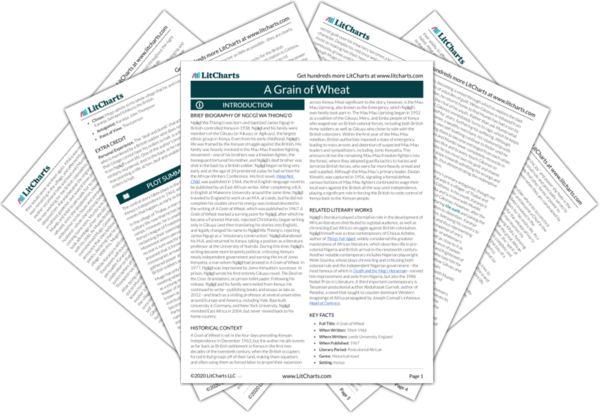Wangari is Gikonyo’s mother. After being abandoned by her husband and left to die, Wangari proves her resilience by taking young Gikonyo and scratching out enough of a living to survive until he is old enough to ply a trade. After Gikonyo is arrested, Wangari works with Mumbi to rebuild their hut and parts of the village, demonstrating her own capability to work and provide like men. When Gikonyo beats Mumbi, Wangari stands up to her son and stops him, once again demonstrating a strength over and above that of her son’s.
